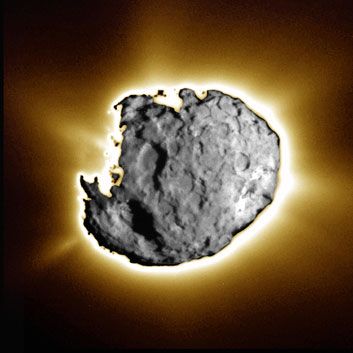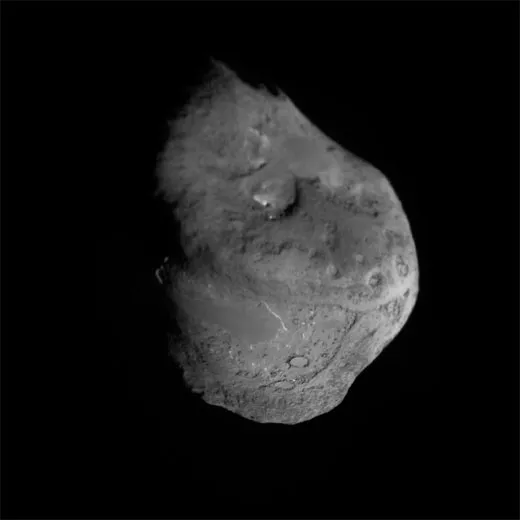Clues from a Comet
The first mission to collect space matter from beyond the moon offers insights into the solar system’s creation
After a thorough analysis of particles collected from a comet that formed some 4.5 billion years ago, at the same time as the Sun and planets in the Milky Way, scientists have uncovered clues to the formation of our solar system—a process that likely involved a mixture of common space dust as well as matter flung from the Sun beyond Neptune's orbit.
The comet, known as Wild 2, was studied by some 200 scientists and is the subject of seven papers in the Dec. 15 Science.
"This is the first time we've ever collected samples from a known astrological body other than the moon," says astronomer Don Brownlee of the University of Washington, the lead author of the first Science report. "We can take samples—tiny samples that are ancient, that have been preserved since the solar system formed—to investigate how our system formed."
In January 2004, NASA's Stardust spacecraft completed its mission to Wild 2 by crossing the comet's path near Jupiter; it returned these samples to Earth two years later. Scientists believe Wild 2 traveled into Jupiter's orbit from its origin in the Kuiper belt, beyond Neptune, over millions of years.
Stardust passed through Wild 2's tail and trapped the comet's grains, rocks and other debris in aerogel—a silica foam, held in an aluminum frame, that slows down the particles and captures some of the fragments.
By analyzing the chemical structures of particles from the sample, the scientists concluded that Wild 2 formed mostly from matter within the Milky Way. That conclusion differs from what some scientists had thought, explains Brownlee, which is that the comet formed primarily from interstellar grains—the basic gases and elements, better known as stardust, that floated in space before the birth of the solar system.
Part of the sample formed at a high temperature that could only be produced near the Sun, says Donald S. Burnett of California Institute of Technology, who wrote a commentary about the studies in Science. Because the comet was born beyond Neptune, some of these particles must have traveled outward to the fringes of the solar system.
"Some people, like me, regarded this as wild speculation—that [particles] would form near the Sun and be transported way out," Burnett says. "Now, it's almost a matter of fact. This tells you that during the early stages, as the Sun was forming, things mixed over big radial distances."
Comets, a mixture of ice formed at severely low temperatures and rocks formed at high heat, have been observed since the 5th century B.C., says astronomer Michael F. A'Hearn of the University of Maryland, who also published a commentary of the studies in Science.
Scientists used spacecrafts to study Halley's comet in 1986, but the analyses took place in space, without gathering particles for laboratory analysis on Earth.
In addition to offering insights about the Milky Way, Wild 2 also offers clues to the origin of life on Earth, A'Hearn says. About 3.8 billion years ago, a bombardment of meteorites, comets and asteroids carried water and other basic matter to our planet and throughout the solar system, he explains.
Understanding the comet's make-up helps scientists piece together "what role comets played in bringing organic material to Earth, out of which life could form," A'Hearn says.
/https://tf-cmsv2-smithsonianmag-media.s3.amazonaws.com/accounts/headshot/eric-jaffe-240.jpg)




/https://tf-cmsv2-smithsonianmag-media.s3.amazonaws.com/accounts/headshot/eric-jaffe-240.jpg)